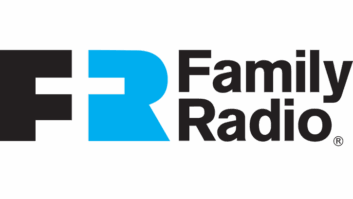Good-bye “car radios,” hello “in-dash multimedia receivers.”
The latter is the term used by Pioneer Electronics (USA) to describe its latest line of LCD touchscreen, Bluetooth-enabled, smartphone-connected, in-car entertainment units.

Ted Cardenas
To say the least, these are not your grandfather’s five-button preset AM radios.
Consider it a sign of the times and of the future. Here’s how Pioneer headlined a news release in May: “Practically Any Vehicle Can be a Smartphone Accessory with Pioneer’s New 2017 NEX In-Dash Multimedia Receivers.” It stated that the company’s five new models “are designed to complement the smartphone lifestyle of today’s consumer with continuous connectivity and access to a variety of entertainment options.”
These receivers are compatible with automotive-specific smartphone interfaces and apps such as Apple CarPlay, Android Auto and Waze; and can connect to online music services such Pandora and Spotify.
Yet radio is not missing from Pioneer’s in-dash multimedia receivers. “For high-quality audio broadcasts, the AVH-2330NEX and AVH-1330NEX feature a built-in HD Radio tuner, providing clear digital reception of HD Radio and additional multi-casting programming on HD1, HD2 and HD3 broadcasts from participating radio stations across the country,” stated the release. They also tune traditional AM/FM broadcasts (the tuner is set to automatically blend based on signal strength, though the feature can be disabled).
Pioneer is one of the most familiar names among companies building products that bring radio and audio to consumers in the automobile. We recently reached out to get a sense of its current thinking about radio in such products.

Pioneer’s AVH-2330NEX is a multimedia DVD receiver with 7-inch WVGA display, Apple CarPlay, Android Auto, Bluetooth, HD Radio tuner, SiriusXM-ready and AppRadio Mode +.
ROLE FOR RADIO
“Even in 2017, we still see an important role for radio in our in-dash multimedia receivers,” said Ted Cardenas, Pioneer’s vice president of marketing. “That’s why radio comes into our thinking when we design new multimedia receivers.”
Cardenas noted radio’s continuing local edge. Unlike streamed audio services, web-based playlists and SiriusXM satellite radio, over-the-air or OTA radio still offers real-time local content where people live, including personalities that they have come to know and love.
“My wife has access to the very latest in-dash entertainment in our car, yet she still tunes to our L.A. station KIIS(FM) to hear Ryan Seacrest live weekday mornings,” said Cardenas. “She still prefers to listen to someone who talks about her hometown, and is actually there in the studio connecting to her. That just doesn’t happen with streaming audio and satellite radio.”
Radio also stays on air when streaming media services fail during natural disasters, as was proven yet again by Hurricanes Harvey, Irma and Maria.
“Cellular and internet service drops during disasters, while radio stations with their backup generators continue to reach the public’s car radios at the worst of times,” Cardenas said. “This alone is a good reason for Pioneer and other in-dash equipment manufacturers to keep OTA radio in their receivers.”
As a result, he said, Pioneer has no intention of ever eliminating OTA radio reception from its in-dash entertainment receivers.
“OTA radio remains something quite different than streaming audio and satellite radio,” said Cardenas. “This is why radio remains central to our receiver design process, even if we are publicly focused on smartphone-enabled entertainment to address current consumer trends.”
Pioneer proved willing to move away from technologies whose time have come and gone, including 8-track tapes, cassette tape players and now CD players.
“Some of our new receivers do not have CD players, for the simple reason that younger listeners are accessing recorded audio from their smartphones or music streaming apps, rather than CDs,” he said.
Of course, the function performed by these media is the same: storing recorded audio for later playback. In that sense they are interchangeable, with one medium replacing another as newer and better playback platforms become available and grow in popularity.
“That’s not true of OTA radio,” said Cardenas. “Nothing has ever taken radio’s place as a live, local audio source for nearly 100 years. That is another reason why our in-dash multimedia receivers still incorporate radio reception.”
THE IMPORTANCE OF CONTENT
Clearly, Pioneer Electronics retains its appreciation for OTA radio in its in-dash multimedia receivers. At the same time, Cardenas warns, broadcasters should not become complacent about their place there. He said today’s listeners are not as easily satisfied as their grandparents were.
He sees HD Radio as an important part of this ecosystem.
“To compete with streaming services with their content variety and on-screen graphical interfaces, OTA radio needs to meet them head-on,” said Cardenas, praising HD Radio for its superior sound, wider range of audio choices and visual/interactive content. He said these qualities give Pioneer and other aftermarket stereo manufacturers a reason to promote HD Radio as a value-added feature in their dashboard offerings.
CARDENAS ON RADIO ISSUES
Radio World asked Ted Cardenas about several other issues of concern to U.S. radio broadcasters.
On whether radio is sufficiently present as a physical choice on the first screen of consumer devices: “In my opinion, at least in the automobile, radio is still a first read on the main screen,” Cardenas said. “On Pioneer’s units with a touchscreen display, we are using either the HD Radio logo as an icon or an icon that resembles a transistor radio. In our non-touchscreen units, the user cycles through sources by pressing a ‘Source’ key, but the tuner is first in the list (although it is a rotating list).”
He noted that Pioneer units ship from the factory with the tuner as the first source playing when powered on for the first time. “I believe this is the case for most of the automotive industry, the OEM car manufacturers included.”
On how often the company hears from broadcasters: He said Pioneer does not hear often, at least directly, from radio broadcasters. It gathers intelligence in the United States from HD Radio (Xperi, the former DTS/iBiquity) and has met with parties from NAB through the HD Radio relationship. “In other markets, Pioneer regional product planning has similar relationships with the local radio broadcasters.”
On concerns about carmakers omitting over-the-air AM reception, citing electrical noise: “In my opinion, the aftermarket has considerable experience in solving problems related to AM, but that knowledge is aging out with the maturity of the aftermarket installer,” Cardenas said. “Certainly, the use of body materials other than steel and the popularity of on-glass or embedded antennas can have an effect on the performance of AM due to the lack of a traditional ground plane. In the case of these vehicles, short of adding a completely aftermarket antenna we are limited in options.”
Beyond dashboard receivers, in what other product areas is radio a consideration, or should be, such as smart speakers? “Pioneer sees a real opportunity in connecting local services to the consumer experience and/or local broadcast,” Cardenas said, “for example, a remote radio broadcast from an advertiser’s location that has an interactive connection to the mobile device or in-dash receiver that actually directs or provides turn-by-turn navigation to the location. This has long been a ‘dream’ that is fast becoming a reality.”
Cardenas feels that sound quality has experienced renewed momentum with consumers thanks to the premium headphone market. “Although begun as a fashion trend, premium headphone sales have been maintained by better sound and have resulted in higher consumer demand for good sound overall,” he said. “We believe this is a real opportunity for broadcasters and hardware manufacturers such as Pioneer to promote the sound quality benefits of HD Radio.”
Compelling radio apps are another way broadcasters can win more ears in today’s cars.
“The beauty of a radio app is that it can complement and enhance what you are offering on air, and keep your station in people’s minds when they are away from the radio,” said Cardenas. When linked to audio streaming, an app can keep listeners tuned to a specific OTA station’s broadcasts, even when the listeners are driving outside of the station’s broadcast footprint.
AUTONOMY
Cardenas said Pioneer also is “quite excited” about the future of autonomous or semi-autonomous vehicles.
“Basically, the car will become another ‘room’ in the consumer’s life, and we believe the consumer will want to upgrade the entertainment and information systems in the vehicle much the same as they do with their homes and portable devices,” he said.
“Regardless, the harsh environment — temperature, vibration, humidity, electrical efficiencies — of the automobile will remain, so the need for specialized manufacturers will remain, translating into new opportunities for manufacturers such as Pioneer.”
This does mean OTA broadcast content will need to evolve as well. “Today, ‘enhanced’ content is important, but in the future it may become a requirement due to the consumer being able to focus much more on the enhanced content since the task of driving has been reduced or removed entirely.”






